The fall webworm (Hyphantria cunea) and the Eastern tent caterpillar (Malacosoma americanum) feed on fruit, shade, and woodland trees. They are of little economic importance in orchards which are regularly sprayed to control codling moths and other pests. Because they form unsightly webs, however, they can be considered a significant pest of nurseries and landscapes.
The fall webworm is frequently confused with the Eastern tent caterpillar. The dirty loosely-woven web of the fall webworm encloses branches; the larvae can be found feeding within this web. The web of the Eastern tent caterpillar, on the other hand, is thickly constructed in the forks and crotches of trees; the larvae do not feed within their webs, but congregate there at night and during rainy weather. Fall webworms occur in summer and fall, whereas eastern tent caterpillars appear in spring.

Description
Fall Webworm: Full-grown larvae are about 1 1/2" long. They may be yellow with dark stripes and spots, or they may be a dull bluish black without yellow. Their bodies are very hairy, and heads are dark. Adult moths have a wingspan of 1 1/2". Their color is nearly pure white.
Eastern Tent Caterpillar: Full-grown larvae are about 2" long with sparse hairs. They are black with white and blue markings and have a white stripe down the middle of the back. Adult moths are reddish-brown with two whitish stripes running obliquely across each forewing.
Life Cycle
Fall Webworm: There is one generation of fall webworm per year, but it is not very synchronous. The insects overwinter as pupae in the soil. In June and July, the adult moths emerge from the soil. Females begin laying their masses of eggs in July. The eggs begin to hatch in mid-July. The larvae feed within the web for one month or more, crawl down the tree, construct a cocoon, and pupate.
Eastern Tent Caterpillar: There is one generation of the Eastern tent caterpillar per year. The insects overwinter as egg masses on twigs, and they hatch in April. After feeding for two days, larvae weave their tent. Successive layers are added to the tent as the larvae develop. Early in summer, the larvae spin cocoons, pupate, and emerge as adults. The females deposit masses of eggs in bands around twigs. The larvae develop inside the eggs, but do not hatch until the next spring.
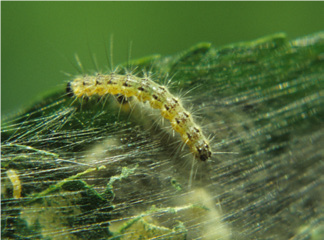
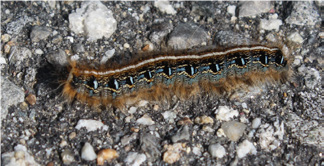

Management
IPM Strategies:
- Monitoring - Looking for and destroying tent caterpillar egg masses can reduce the need for treatment. Early detection of webs of either pest is important to avoid excessive defoliation.
- Cultural Practices- Destroy nests by pruning or removing by hand (a stick may be inserted into large webs and twisting it loosens the webs).
- Biological Control - Several natural enemies keep the populations of both the fall webworm and the Eastern tent caterpillar in check, including birds, small mammals, insect predators, spiders, and parasitic wasps. A naturally occurring virus and a fungus can reach levels that kill many caterpillars of both species when humidity and temperatures are right. Biological insecticides based on Bacillus thuringiensis (Bt) can be used for either pest and should be applied when the tents are first noticed and the larvae are still small.
- Chemical Control - Apply pesticides to hard-to-reach infestations or when populations are heavy. Consult your county Agricultural Field Specialist for specific pesticide recommendations.
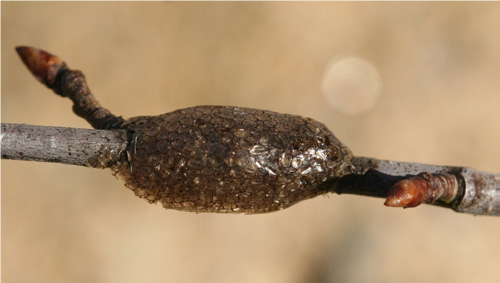
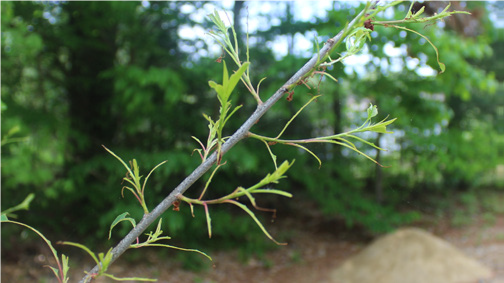
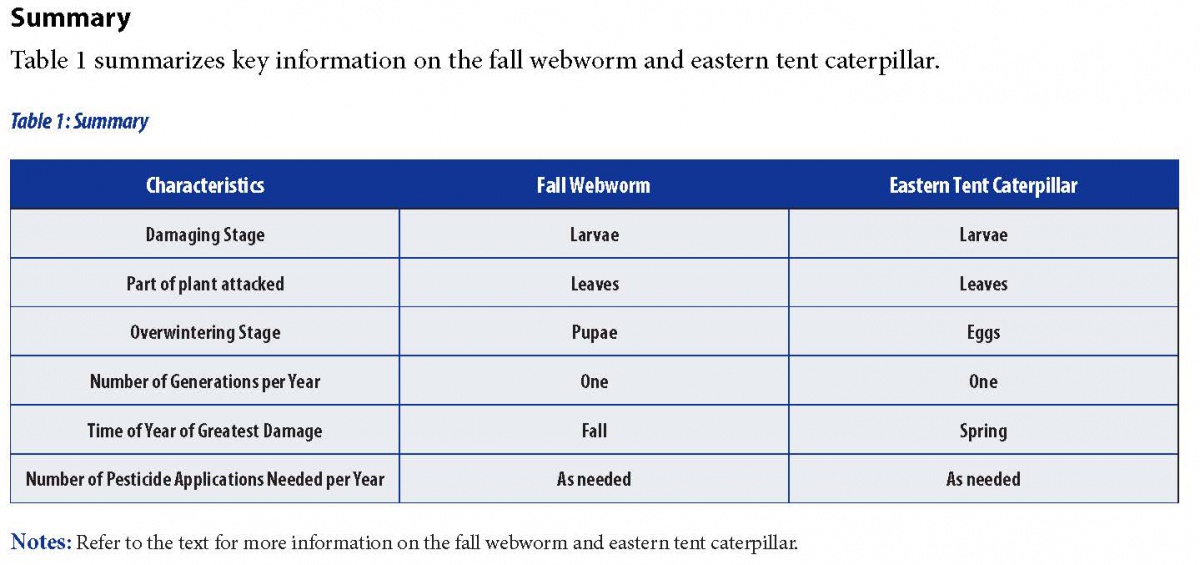
Stop! Read the label on every pesticide container each time before using the material. Pesticides must be applied only as directed on the label to be in compliance with the law. All pesticides listed in this publication are contingent upon continued registration. Contact the Division of Pesticide Control at (603) 271-3550 to check registration status. Dispose of empty containers safely, according to New Hampshire regulations.
Download the resource for the complete factsheet.

